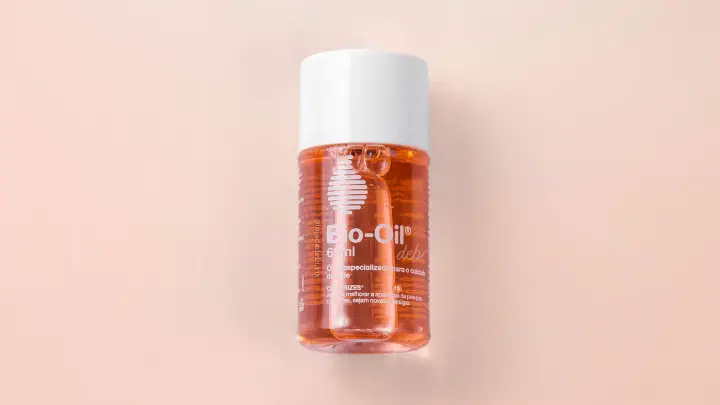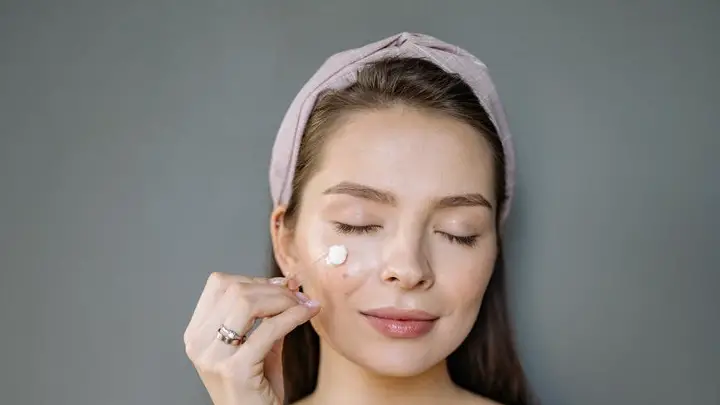Lactic acid and niacinamide are similar in that they’re both anti-aging ingredients and both can be purchased over the counter. If you’re trying to decide which one to use, you may find yourself asking, can you use lactic acid and niacinamide together?
The answer is yes, you can use lactic acid and niacinamide together. These two ingredients work to exfoliate the skin, shrink pores, improve the appearance of wrinkles, and strengthen the skin barrier.
This article will cover why you can use them together and how they can be effective for your skin or even your acne. First, let us learn more about what they are.
What Is Lactic Acid?
Lactic acid is an alpha hydroxy acid (AHA) derived from milk; it’s a naturally occurring substance that has skin lightening benefits (it exfoliates dead skin cells).
In skincare products, people often use lactic acid to reduce the appearance of fine lines and wrinkles, treat acne and improve overall skin tone.
However, while some AHAs can be irritating or drying, lactic acid is pretty mild and considered safe for all skin types, even sensitive ones.
In addition to its anti-aging effects, lactic acid has exfoliating effects that can smooth out the surface of your skin, making it appear more radiant and healthy.
It comes in strengths between 5% and 12% in over-the-counter products and up to 70% in dermatologist office treatments.
What Are the Benefits of Using Lactic Acid for Skin?
- Exfoliates dead skin cells
- Improves moisture barrier function
- Treats acne and other skin conditions
- Improves skin’s elasticity
- Evens out skin tone and reduces discoloration
What Is Niacinamide?
Niacinamide is a form of vitamin B3 that’s often added to skincare products because it offers multiple benefits for aging skin.
Sometimes referred to as nicotinamide or nicotinic acid amide, niacinamide works on several levels to improve general skin appearance and health.
Being a water-soluble vitamin, niacinamide works with the natural substances in your skin to reduce visibly enlarged pores. It also helps to improve uneven skin tone, soften skin, diminish dullness, and strengthen the skin barrier.
And because it’s water-soluble, niacinamide is generally well-tolerated by all skin types. Introduced into your skincare routine, it can play nicely with other superstar ingredients found in many anti-aging products.
What Are the Benefits of Using Niacinamide for Skin?
- Brightens complexion
- Reduces excess oil production
- Reduces redness
- Fights water loss
- Minimizes pore appearance
- Treats acne
- Minimizes the appearance of wrinkles
Can You Use Lactic Acid and Niacinamide Together?
Yes, you can. This is because the two ingredients work in very different ways, and research has shown that it’s generally safe to use them together.
Lactic acid is an alpha hydroxy acid (AHA) exfoliant that works by increasing the rate of skin cell turnover and removing dead skin cells on the surface of the skin.
Niacinamide, on the other hand, is a water-soluble form of vitamin B3 that can help balance sebum production, reduce inflammation, hydrate the outer layer of the skin, and protect against environmental damage.
Because these two ingredients work in very different ways, their benefits complement each other well.
For example, while lactic acid exfoliates your skin’s surface to reveal fresh new skin underneath, niacinamide will help maintain hydration levels in your skin. This helps to counter any potential dryness from your lactic acid.
Both ingredients are useful for improving the appearance of aging or damaged skin, so you can use them together in your routine to produce greater results.
Benefits of Using Lactic Acid and Niacinamide Together
There are many benefits of using lactic acid and niacinamide together. One of the most beneficial effects is that the two ingredients can effectively fight free radicals at the cellular level, which helps reduce the effects of aging.
Also, treating your skin with products that contain lactic acid and niacinamide will help improve your skin’s overall quality. Both ingredients will help even out skin tone, reduce wrinkles and other aging signs, and reduce pore size.
The two ingredients will also help to prevent acne by unblocking pores and preventing excess oil from building up in the pores. As a result, you’ll notice a reduction in acne and blemishes on your face.
Another benefit of using lactic acid and niacinamide together is that you can use them to improve your skin’s barrier function. This will give you smoother, softer skin with fewer blemishes or imperfections.
Using lactic acid and niacinamide together will also have a positive effect on your complexion by brightening it up while evening out your skin tone, you’ll look younger as well.
How to Use Lactic Acid and Niacinamide Together
The best way to use niacinamide and lactic acid together is to introduce them into your skincare routine separately. Begin by applying your niacinamide product in the morning followed by your lactic acid product at night.
You can also use niacinamide and lactic acid together at the same time. However, because both products can make your skin more sensitive to sunlight, it is important to only apply them at night if you are going outside during the day.
Most skincare experts also recommend waiting 20 minutes between each application to let the products absorb properly.
How to layer niacinamide and lactic acid together
- Wash face with warm water and pat dry.
- Apply your lactic acid product to your entire face, avoiding your eye area. Wait 20 minutes before applying your niacinamide product so that it can do its job thoroughly.
- Wait 15 minutes, then apply moisturizer/sunscreen if needed.
Lactic Acid Before or After Niacinamide?
The order in which you apply your products matters. The product that goes on first will be the first one to be absorbed into your skin, and so on.
You should always start with the stronger product and finish with the weaker product. So, in your case, it would be lactic acid first then niacinamide after.
When layering these two ingredients together, it’s also important to wait at least 20 minutes between each application to allow them to absorb properly.
Side Effects of Using Lactic Acid and Niacinamide Together
When using both ingredients, it’s important to remember that both can be sensitizing agents. That means they may cause redness, itching, or irritation when you first start using them.
When applied to the same area of skin at the same time, they can cause a reaction that results in redness, a warm sensation, and itching.
These effects are temporary, so they’re unlikely to cause permanent damage, but you should separate lactic acid and niacinamide use by at least 30 minutes if you want to try both.
To avoid adverse reactions from using these two ingredients in your skincare routine, it’s best to use a low concentration of each product.
What Can You Not Use With Lactic Acid?
If your skin is sensitive, you should avoid combining lactic acid with the following products:
- Retinol
- Benzoyl peroxide
- Glycolic acid
- Citric acid
- L-ascorbic acid (Vitamin C)
Is It Safe to Use Lactic Acid With Salicylic Acid?
It depends. Although these two acids are compatible with each other, they might not be the best choice for all skin types.
If you have an oily or acne-prone skin type, salicylic acid and lactic acid can work well together without any complications.
However, if you have a combination or dry skin type, using both ingredients together may cause irritation and dryness. That is because both ingredients help to reduce oil in the skin, which can lead to dryness and irritation.
This can also take a toll on your skin barrier, which is your first line of defense against pathogens (like bacteria). So keep these two apart from each other if you have a combination or dry skin.
To use this combo, apply lactic acid by patting it onto the skin with your fingertips. Wait 30 minutes, then follow up with salicylic acid and moisturizer, as these ingredients can increase dryness.
FAQs
How does lactic acid work?
Lactic acid works by exfoliating the surface of the skin to remove dead cells and stimulate the growth of new cells. This process helps to reveal smoother, softer skin and creates a more even skin tone.
Lactic acid also helps stimulate collagen production in the lower layers of the skin, which can help improve elasticity and firmness. The increased collagen production also decreases the appearance of fine lines and wrinkles.
Can you use niacinamide with hyaluronic acid?
Yes, you can. Niacinamide and hyaluronic acid are two skincare ingredients that work well together to improve skin tone, texture, and elasticity.
This combination treatment is one of the best ways to treat conditions such as acne and rosacea, which usually occurs when oil production or the skin’s immune system becomes unbalanced.
What is the best way to use niacinamide?
Use it twice daily after cleansing and toning. Apply a few drops to your entire face, avoiding the eye area (which is more sensitive than other facial skin).
You can also combine niacinamide with other active ingredients. For example, it pairs well with retinoids and can reduce irritation.
However, if you are using a prescription retinoid but still want to add niacinamide to your routine, consult with your dermatologist before using both ingredients in your routine.
Conclusion
Lactic acid and niacinamide work great together, allowing you to get rid of fine lines, reduce the appearance of large pores and give your skin tone a more even look.
However, it’s recommended to use them at alternate times or at least 20 minutes apart from each other. These two ingredients don’t mix well together, so you won’t get the effects of either if you mix them.
As long as you follow this guide, there is no reason why you can’t use these two ingredients together.
Thanks for reading.
If you want to learn more about how lactic acid and niacinamide work and which one is right for your skin type, visit Serum101 today.






